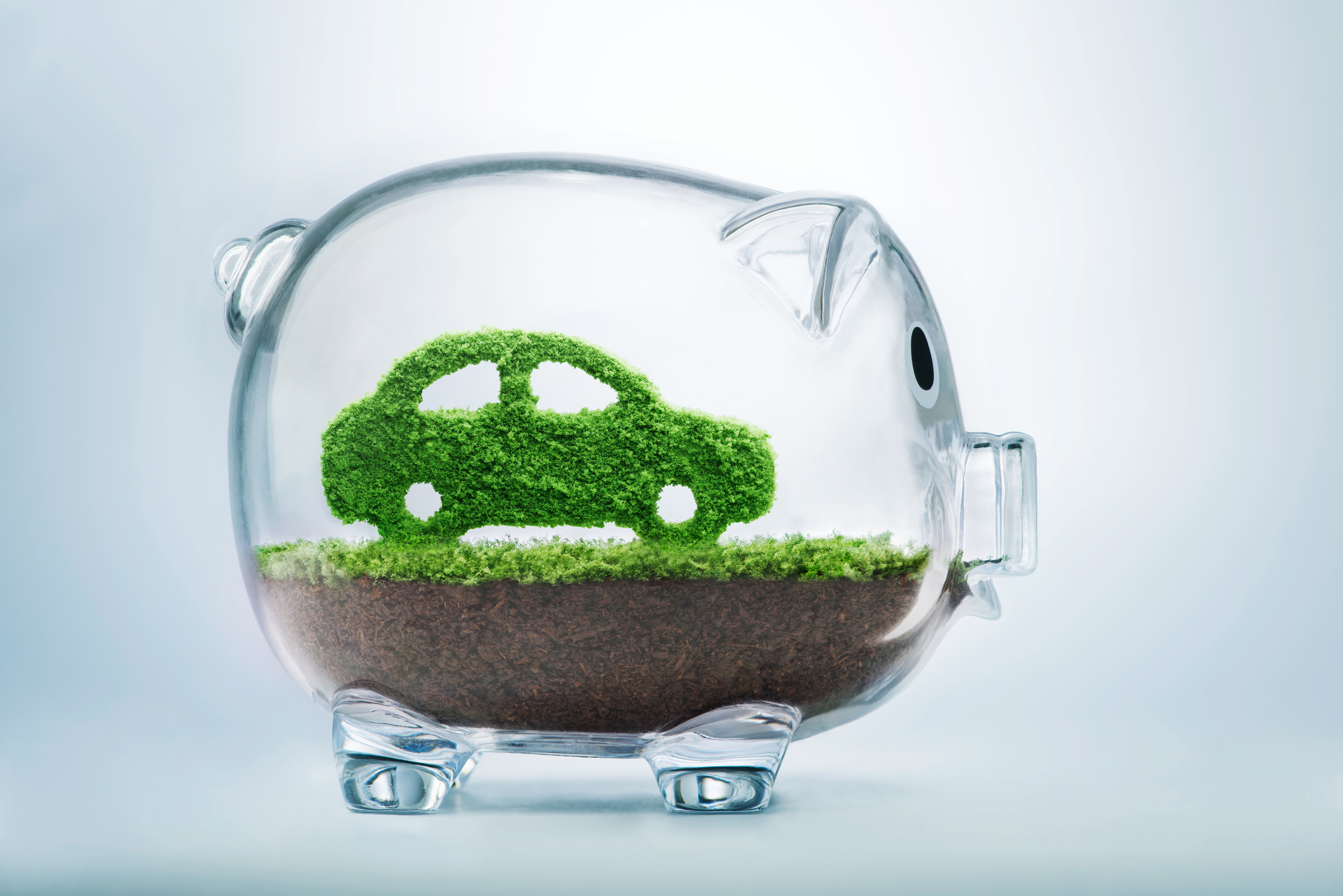Lower Oil Prices on the Horizon
More crude produced in the U.S. and lower demand for it both here and overseas spell relief for consumers.

After nearly a decade of unrelenting gains, oil prices are poised for a drop. New sources of supply and slowing demand both at home and abroad will combine to push prices down by 20% to 30% by 2016.
The plunge will also lower gasoline prices, to around $3 a gallon, on average — a welcome break for motorists, who will be able to spend the money they save at the pumps on other purchases, helping to boost the economy.
To appreciate just how significant the coming downshift will be, consider the recent history of oil prices:
From just $107.88 $24.99 for Kiplinger Personal Finance
Become a smarter, better informed investor. Subscribe from just $107.88 $24.99, plus get up to 4 Special Issues

Sign up for Kiplinger’s Free Newsletters
Profit and prosper with the best of expert advice on investing, taxes, retirement, personal finance and more - straight to your e-mail.
Profit and prosper with the best of expert advice - straight to your e-mail.
In 2002, crude oil in the U.S. averaged $26 per barrel, fairly close to the low prices that prevailed for much of the 1980s and 1990s. But by 2008, crude had nearly quadrupled, to $100 per barrel, because of surging demand from China and other fast-growing countries, along with waning domestic oil output. The recession that hit the U.S. economy that year brought a sharp drop, but only briefly. Prices have averaged about $95 per barrel since 2011.
But now, the factors behind the bull oil market are reversing. Expensive gasoline has convinced many consumers to trade in SUVs for fuel-sipping alternatives, and automakers are scrambling to boost the fuel economy of every model they sell. At the same time, high prices have unleashed a surge of new exploration and drilling by energy firms eager to cash in on expensive oil. As a result, U.S. oil consumption is off 11% from its peak, while output has rebounded by 30% in just four years.
Similar shifts are happening abroad. Oil demand in emerging markets is easing, after a decade of torrid growth. Fuel subsidies meant to spur newly middle-class consumers to buy their first automobiles are being pared back as China and other fast-growing nations look to cut costs and air pollution. Wealthy Middle Eastern countries are building power plants that run on natural gas, to lessen the need to burn oil for electricity during the region’s scorching summers. In Europe and Japan, weak economies and stringent environmental policies figure to keep oil demand stagnant at best. Meanwhile, output is surging from Canada to Iraq to deepwater fields off the coasts of Africa.
That combination of mounting supply and cooling demand spells “a new era of lower energy prices,” according to veteran energy analyst Phil Flynn of commodities brokerage PRICE Futures Group. Although a decade of rising prices convinced many traders and energy analysts that oil will trade ever higher, he sees a major correction in the works. “This is very typical” of the boom-and-bust cycles that commodities go through, Flynn says, adding that “peak oil” — the theory that dwindling oil supplies inevitably mean higher prices — dates back to the 19th century, when whale oil was a key commodity.
Michael Lynch, of Massachusetts-based Strategic Energy and Economic Research, sees much the same scenario unfolding. He compares today’s oil markets to those of the late 1970s, when a similar era of high prices caused by OPEC oil embargoes led to the pessimistic assumption that oil would remain painfully expensive forever. But then as now, high prices prompted conservation and new drilling, and by the early 1980s the price of oil had collapsed.
And unlike in the 1980s, new technologies are enabling a wide range of alternatives to oil as a transportation fuel. In particular, freight shippers are looking to natural gas as a cheaper way to move cargo by truck, rail or water. The surge of gas production enabled by hydraulic fracturing and other drilling techniques has made natural gas in the U.S. cheap and abundant, and shippers are eager to cash in. Glen Kedzie, vice president and environmental affairs counsel at the American Trucking Associations, says trucking firms in particular are making big investments in rigs that run on liquefied or compressed natural gas instead of diesel fuel, and truck manufacturers are rushing to offer new models. Expect to see similar trends in freight rail and ocean shipping take significant bites out of future oil demand, too.
The increasing reliance on natural gas instead of oil figures to give natural gas prices a boost in coming years, much to the dismay of consumers and businesses that have got accustomed to cheap and abundant natural gas for everything for home heating to making plastics. But with oil prices at painfully high levels and gas so affordable, that was bound to happen eventually. And the rise in gas figures to be more moderate than the accompanying decline in oil, spelling a net gain for the economy. After a long period of imbalance in the energy world, says Flynn, “things are going to get more into whack.”
Profit and prosper with the best of Kiplinger's advice on investing, taxes, retirement, personal finance and much more. Delivered daily. Enter your email in the box and click Sign Me Up.

Jim joined Kiplinger in December 2010, covering energy and commodities markets, autos, environment and sports business for The Kiplinger Letter. He is now the managing editor of The Kiplinger Letter and The Kiplinger Tax Letter. He also frequently appears on radio and podcasts to discuss the outlook for gasoline prices and new car technologies. Prior to joining Kiplinger, he covered federal grant funding and congressional appropriations for Thompson Publishing Group, writing for a range of print and online publications. He holds a BA in history from the University of Rochester.
-
 How to Safely Open an Online Savings Account
How to Safely Open an Online Savings AccountOnline banks offer generous APYs that most brick-and-mortar banks can't match. If you want to make the switch to online but have been hesitant, I'll show you how to do it safely.
-
 7 Ways to Age Gracefully Like the Best Stock Photo Seniors
7 Ways to Age Gracefully Like the Best Stock Photo SeniorsAs a retirement editor, I've gleaned valuable wisdom (and a lot of laughs) from one older couple that tops the seniors' stock photo charts.
-
 My First $1 Million: Banking Executive, 48, Southeast U.S.
My First $1 Million: Banking Executive, 48, Southeast U.S.Ever wonder how someone who's made a million dollars or more did it? Kiplinger's My First $1 Million series uncovers the answers.
-
 What to Expect from the Global Economy in 2026
What to Expect from the Global Economy in 2026The Kiplinger Letter Economic growth across the globe will be highly uneven, with some major economies accelerating while others hit the brakes.
-
 Shoppers Hit the Brakes on EV Purchases After Tax Credits Expire
Shoppers Hit the Brakes on EV Purchases After Tax Credits ExpireThe Letter Electric cars are here to stay, but they'll have to compete harder to get shoppers interested without the federal tax credit.
-
 Amid Mounting Uncertainty: Five Forecasts About AI
Amid Mounting Uncertainty: Five Forecasts About AIThe Kiplinger Letter With the risk of overspending on AI data centers hotly debated, here are some forecasts about AI that we can make with some confidence.
-
 Worried About an AI Bubble? Here’s What You Need to Know
Worried About an AI Bubble? Here’s What You Need to KnowThe Kiplinger Letter Though AI is a transformative technology, it’s worth paying attention to the rising economic and financial risks. Here’s some guidance to navigate AI’s future.
-
 Will AI Videos Disrupt Social Media?
Will AI Videos Disrupt Social Media?The Kiplinger Letter With the introduction of OpenAI’s new AI social media app, Sora, the internet is about to be flooded with startling AI-generated videos.
-
 What Services Are Open During the Government Shutdown?
What Services Are Open During the Government Shutdown?The Kiplinger Letter As the shutdown drags on, many basic federal services will increasingly be affected.
-
 The Economy on a Knife's Edge
The Economy on a Knife's EdgeThe Letter GDP is growing, but employers have all but stopped hiring as they watch how the trade war plays out.
-
 Apple Readies for AI Upgrade with New iPhones
Apple Readies for AI Upgrade with New iPhonesThe Kiplinger Letter The tech giant has stumbled when it comes to artificial intelligence, but a new batch of iPhones will help it make headway.